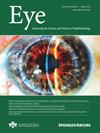新生血管性老年黄斑变性的光学相干断层血管造影:进展与未来展望的全面回顾。
IF 2.8
3区 医学
Q1 OPHTHALMOLOGY
引用次数: 0
摘要
光学相干断层血管成像(OCTA)有望加强对各种视网膜血管疾病的治疗,包括新生血管性老年性黄斑变性(nAMD)。鉴于 nAMD 的血管特性和黄斑新生血管(MNV)的独特血管结构,详细分析预计将变得越来越重要。人工智能(AI)研究表明,面阵 OCTA 图像可能比谱域光学相干断层扫描(SD-OCT)图像具有更强的预测能力,这突出了识别关键血管参数的必要性。分析血管有助于区分 MNV 亚型和完善诊断。未来将 OCTA 参数与临床数据相关联的研究可能会促使修订分类系统。然而,如何综合利用定性和定量 OCTA 生物标志物来提高疾病活动性诊断的准确性仍有待开发。关于显示活动性病变的最佳生物标志物,目前仍存在分歧,需要进行全面的前瞻性研究来验证。人工智能有望从 OCTA 的庞大数据集中提取有价值的见解,使研究人员和临床医生能够充分利用其 OCTA 成像功能。然而,数据数量和质量方面的挑战对人工智能在这一领域的发展构成了重大障碍。随着 OCTA 在临床实践中的应用和数据量的增加,人工智能驱动的分析有望进一步增强诊断能力。本文章由计算机程序翻译,如有差异,请以英文原文为准。


Optical coherence tomography angiography in neovascular age-related macular degeneration: comprehensive review of advancements and future perspective
Optical coherence tomography angiography (OCTA) holds promise in enhancing the care of various retinal vascular diseases, including neovascular age-related macular degeneration (nAMD). Given nAMD’s vascular nature and the distinct vasculature of macular neovascularization (MNV), detailed analysis is expected to gain significance. Research in artificial intelligence (AI) indicates that en-face OCTA views may offer superior predictive capabilities than spectral domain optical coherence tomography (SD-OCT) images, highlighting the necessity to identify key vascular parameters. Analyzing vasculature could facilitate distinguishing MNV subtypes and refining diagnosis. Future studies correlating OCTA parameters with clinical data might prompt a revised classification system. However, the combined utilization of qualitative and quantitative OCTA biomarkers to enhance the accuracy of diagnosing disease activity remains underdeveloped. Discrepancies persist regarding the optimal biomarker for indicating an active lesion, warranting comprehensive prospective studies for validation. AI holds potential in extracting valuable insights from the vast datasets within OCTA, enabling researchers and clinicians to fully exploit its OCTA imaging capabilities. Nevertheless, challenges pertaining to data quantity and quality pose significant obstacles to AI advancement in this field. As OCTA gains traction in clinical practice and data volume increases, AI-driven analysis is expected to further augment diagnostic capabilities.
求助全文
通过发布文献求助,成功后即可免费获取论文全文。
去求助
来源期刊

Eye
医学-眼科学
CiteScore
6.40
自引率
5.10%
发文量
481
审稿时长
3-6 weeks
期刊介绍:
Eye seeks to provide the international practising ophthalmologist with high quality articles, of academic rigour, on the latest global clinical and laboratory based research. Its core aim is to advance the science and practice of ophthalmology with the latest clinical- and scientific-based research. Whilst principally aimed at the practising clinician, the journal contains material of interest to a wider readership including optometrists, orthoptists, other health care professionals and research workers in all aspects of the field of visual science worldwide. Eye is the official journal of The Royal College of Ophthalmologists.
Eye encourages the submission of original articles covering all aspects of ophthalmology including: external eye disease; oculo-plastic surgery; orbital and lacrimal disease; ocular surface and corneal disorders; paediatric ophthalmology and strabismus; glaucoma; medical and surgical retina; neuro-ophthalmology; cataract and refractive surgery; ocular oncology; ophthalmic pathology; ophthalmic genetics.
 求助内容:
求助内容: 应助结果提醒方式:
应助结果提醒方式:


